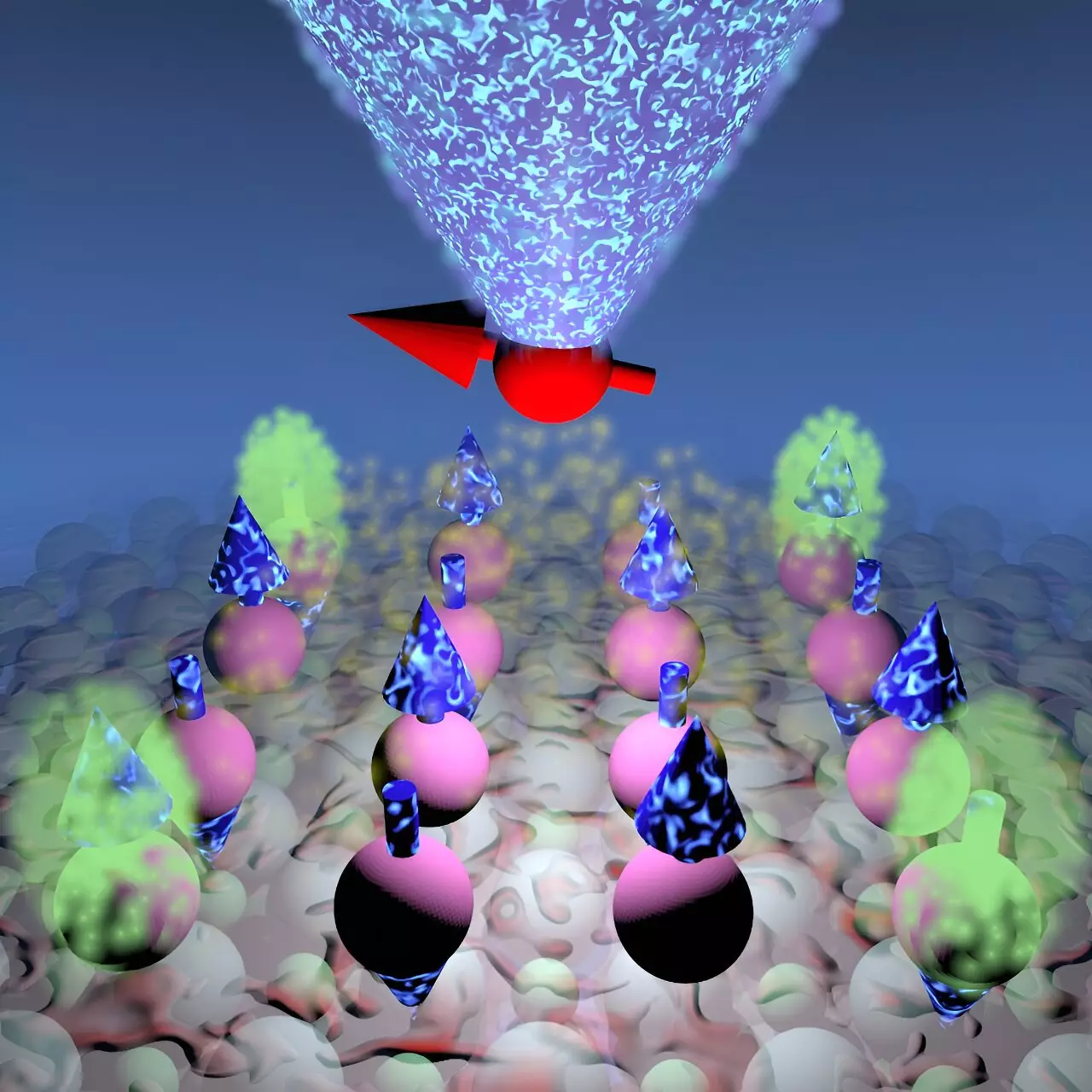At the intersection of quantum physics and material science lies the fascinating concept of quantum states merging to create entirely new collective phases of matter. This phenomenon emerges when various atomic components interact under the principles of quantum mechanics, leading to the development of exotic states with unique properties. Recent research by a collaborative team from Aalto University and the Institute of Physics CAS has produced a striking illustration of this concept. Through meticulous engineering at the atomic level, this research team has succeeded in fabricating an artificial quantum material that introduces a higher-order topological quantum magnet. This new material is not just a passing curiosity; it could have profound implications for the future of quantum technologies.
The research involved a sophisticated process where magnetic titanium was deposited onto a magnesium oxide substrate, with each atom precisely placed to instill desired quantum mechanical properties. At the theoretical helm of this innovative design was Jose Lado, a key figure at Aalto University, whose contributions elucidated how specific interactions between atoms could yield a new state of matter. Meanwhile, Kai Yang and his team at the Institute of Physics CAS tackled the practical execution, utilizing advanced techniques like scanning tunneling microscopy. This atomic manipulation allowed them to interfere with individual atomic features, leading to the discovery of a new quantum phase characterized by topological magnetism.
The artificial construct is marked by its ability to demonstrate a robust stability against environmental disturbances—characteristics that are incredibly crucial in practical applications, especially in quantum computing, where maintaining coherence is paramount.
Topological quantum magnets distinguish themselves from conventional magnets through their quantum superposition of magnetic states. This leads to the emergence of exotic excitations that defy traditional physical interpretations. Remarkably, the type of excitation observed—often manifesting as fractional quasiparticles where electrons behave as multiple indistinct entities—offers insights that challenge established norms in material physics. Jose Lado noted that these excitations open the door to novel physical phenomena that could be unprecedented in existing quantum materials.
Moreover, the formation of these topological excitations manifests in unique properties, such as significant resilience to decoherence. This durability against external perturbations is a game-changer, as it poses a potential solution to one of quantum computing’s chief issues: how to maintain coherence over extended periods.
The findings from this collaborative study extend far beyond mere academic interest; they point toward groundbreaking possibilities for future technologies. As quantum computers strive to enhance processing power and efficiency, the incorporation of stable, high-coherence quantum materials becomes vital. By leveraging the protective qualities of topological quantum magnets, researchers may overcome existing limitations faced by contemporary qubits, ushering in a new era in quantum technology applications.
The implications are especially pertinent in areas such as quantum cryptography and sensing technologies, where the need for robustness against environmental disruptions is crucial. With the ability to preserve quantum states against decoherence, these artificial quantum materials could serve as foundational elements in the next generation of quantum devices.
The research presented not only opens the doors for technological advancements but also invites new inquiry into the underlying principles of quantum mechanics. Continued exploration and experimentation could yield even more advanced materials with extraordinary properties, creating a pathway for new paradigms in both experimental and theoretical physics. The work of Lado and Yang emphasizes the importance of cross-disciplinary collaboration, where physicists and material scientists come together to explore the vast potential of quantum materials.
As scientists delve deeper into the realm of topological excitations and higher-order quantum states, the exciting prospect of uncovering additional functionalities within these materials looms large. This endeavor stands to enhance not only our understanding of quantum physics but also the applications that could stem from such profound discoveries, ultimately shaping the landscape of technology in the coming years.


Leave a Reply